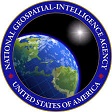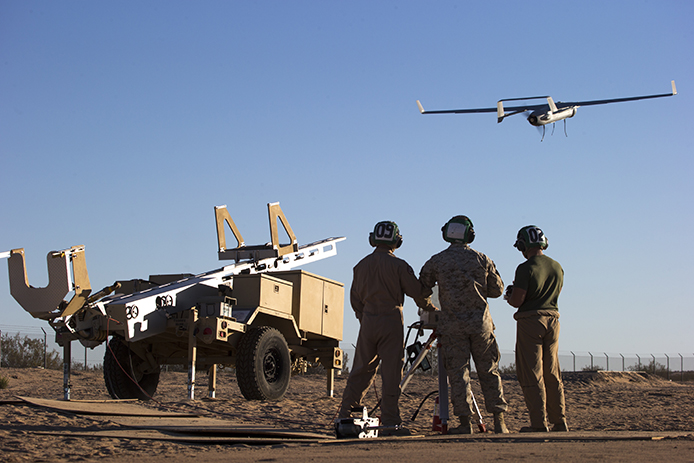NGA posts DENALI industry update
 On January 12, the National Geospatial-Intelligence Agency posted an industry update on its DENALI program.
On January 12, the National Geospatial-Intelligence Agency posted an industry update on its DENALI program.
NGA is modifying the approach used on the previous System Engineering and Integration for the NSG (SEIN) contract under an umbrella structure called DENALI. Our overarching acquisition strategy for DENALI has evolved from the June 2017 Request For Information. NGA reorganized the approach for satisfying enterprise level SE&I support from 26 Engineering Services (ES) into nine (9), which encapsulate all of the required technical work. The nine engineering services are defined as follows:
- ES1: Enterprise and Solutions-Level Architecture Engineering. Services to plan, design, define, develop, document and baseline the Global GEOINT Enterprise Architecture (GEA), inclusive of Business, Data, Network, Security and Solutions-Level Architectures to ensure enterprise systems work together in an integrated fashion to deliver mission capabilities and solutions.
- ES2: Enterprise and Capabilities-Level Requirements Engineering. Services to develop, document, decompose and allocate strategic through tactical level requirements to establish and enable GEOINT Mission Solutions (e.g., GEOINT Enterprise Capabilities Documents (ECDs), Statements of Capabilities (SOCs), Capabilities Description Documents (CDDs), and System and Software Requirements Documents (SysRDs and SRDs)).
- ES3: Enterprise Integration Engineering (Cross System and Segment). Services to integrate program and project solutions that cut across budget programs, development contracts and sensor segments and therefore require integration to ensure that the multiple parts come together seamlessly to deliver mission capabilities.
- ES4: Capabilities-based Analysis, Business Engineering (Pre-Acquisition Engineering), Analysis of Alternatives (AoAs), Trade Studies and Engineering Assessment. Services to perform Capabilities-based Analysis, Business Engineering (Pre-Acquisition Engineering) and AoA’s, Trade Studies, and Engineering Assessments.
- ES5: Segment and Project Engineering (w/in Systems and Segments). Segment- and project- level engineering to ensure the segment/project is progressing towards the accomplishment of its objectives and the delivery of mission capabilities.
- ES6: Foundational Systems Engineering. Foundational Systems Engineering activities include: Configuration Management, Enterprise- and Program-level Scheduling and Effectivity Management; Governance and Engineering Reviews; Standards Compliance, Definitions, Development & Management to include the Technical Reference Architecture; Enterprise Risk Management; and Systems Engineering Processes and Tools.
- ES7: Data Solutions Engineering. Data analysis, data science and data engineering services to design and deliver the Data Services Architecture – Geospatial (DSA-G) to effectively manage and expose GEOINT to the DoD, IC, Federal Agencies, first responders and allies on all security fabrics.
- ES8: Modeling, Simulation & Analysis (MS&A). Services to assist the Government with Modeling, Simulation and Analysis (MS&A). MS&A activities include the building, maintaining and use of software and/or digital representations of architectures, systems, services, subsystems, and components across the National System for Geospatial Intelligence (NSG), Allied System for Geospatial Intelligence (ASG), commerce, and mission partners’ architectures using Model-based Systems Engineering (MBSE) methods and tools.
- ES9: Platform Services/DevOps and Software Engineering. Activities include the design, integration, and sustainment of a state of the art enterprise Platform-as-a-Service (PaaS) and the championing of PaaS to promote its utilization. Support for developing and implementing robust tools and training to orchestrate the implementation of a state of the art DevOps framework.
The nine engineering services are intended to support many on-going and future efforts within NGA. Addressing such a broad range of activities required a comprehensive capture of requirements to meet the many possible mission execution areas within the NGA. The scope of requirements identified to support each engineering service are detailed; however, they are not intended to bound the entirety of work that may be involved. Additional work requirements are possible in each Engineering Service. All Engineering Services will use a common suite of Labor Categories to support the requirements specified.
The nine engineering services were grouped together in a way that ensures a strong synergy and a tight coupling of NGA systems engineering and integration activities at the enterprise level. The groupings are depicted in the graphic on the following page.
Despite being grouped for contracting purposes, there will be emphasis placed on working as one team collaboratively, as the entirety of the DENALI effort requires the cooperative and focused efforts of all government and industry team members.
The DENALI effort is organized under one Program office which consists of four (4) separate requirements. Four draft SOWs will be incrementally released over the next 60 days. The Government will welcome industry comment on the SOWs and how best to optimize the integrated engineering services delivery to the Government. DENALI intends to be fully operational by 8 November 2018, when the current SEIN contract ends.
Full information is available here.
Source: FedBizOpps








